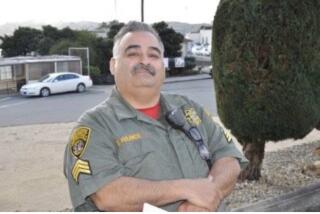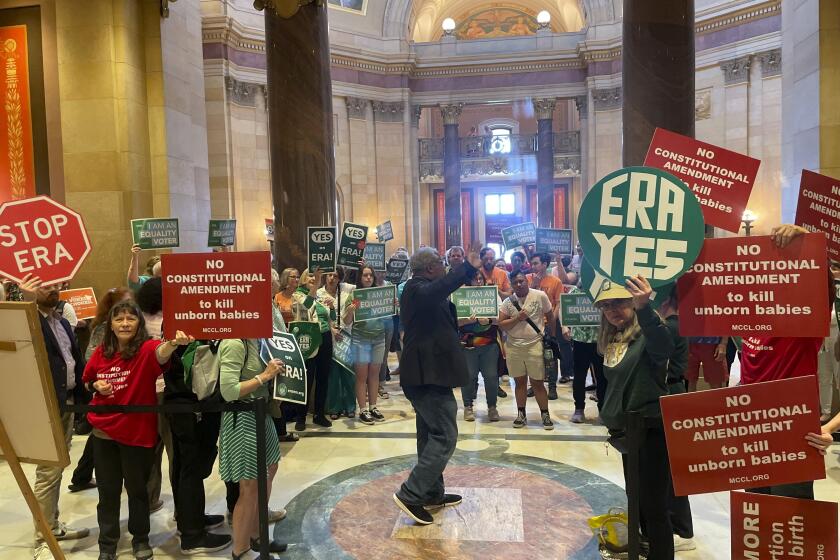Dynamic duality
It’s hard to ignore the glaring and suggestive connections between the two great rebellions that closed the 18th century and ushered in the modern era: our own Revolution, which severed our bond with imperial Britain and installed a democracy in its place; and the French Revolution, which signaled, though it did not achieve, the end of monarchy as a viable mode of government.
Both uprisings shared the backdrop of the Enlightenment, both were directed against royal authority and both were fought in the name of a new conception of individual liberty. In addition, and crucially, the French upheaval derived much of its audacity, its idealism and even some of its leaders from the American struggle -- in particular, a dashing young aristocrat, the Marquis de Lafayette.
Yet as much as they had in common, the two revolutions were profoundly different, so much so that those actors at the time who made the mistake of conflating the two events paid dearly for their mistake. Thomas Paine, for example, traveled to France to join the insurgency and was elected to the National Convention, but he was jailed soon thereafter and narrowly escaped the guillotine. Many of the French comrades who served with Lafayette in America were not so lucky and lost their lives as the furor swept their homeland. The marquis himself was forced to flee, only to be imprisoned in Austria, and then to live in exile, before returning at last under the dictator Napoleon Bonaparte.
It’s a bit disconcerting, then, to come across a historian two centuries later who builds a narrative around the supposed confluences of the two revolutions and the presumed bond between two actors in the transatlantic drama. But that is what James R. Gaines has offered in “For Liberty and Glory: Washington, Lafayette, and Their Revolutions.”
It’s easy to see how Gaines came up with his story line. Washington and Lafayette were indeed close, for a brief period, when the marquis was young and rich and sailed to America in search of adventure. There he found Washington facing his darkest hour, outmanned by the British and driven to frozen ground at Valley Forge, and for all the hardship -- indeed, probably because of it -- the two formed a friendship that became the stuff of legend.
From that foundation, Gaines spins his yarn as far as it will go, encompassing the lives of his two protagonists and the parallel but vastly different conflicts that infused each life with drama and meaning. Such extrapolations can foster insight and new knowledge, but they can also prove aimless and a little fatuous, as they do here. The frame of this book is a construct and, by and large, an unwieldy one.
Gaines admits as much in his introduction. For all their similarities, he notes, Washington and Lafayette were separated by a generation in age as well as by character, and, crucially, “Washington was a far more important historical figure than Lafayette.” Gaines then discloses his true impetus. “Still, an account of their friendship opens a window on many things . . . including the first act in the great psychodrama of French-American relations, as well as the perennially tempting mystery of how struggles for the same noble and universal principles could have had such wildly different outcomes.”
My instinctive reaction is to stop Gaines right there: There’s really not much mystery as to why France veered into chaos and anarchy while America’s new republic, for all its birthing pains, survived and then flourished. As Gaines himself illustrates in his meandering narrative, the presence of the ancien régime, with its legions of nobility and its traditions of entitlement, meant that the language of liberty and civil rights translated far more easily into the idiom of late-Colonial America than the French of Louis XVI.
Even Lafayette, a leader in the early commotions in Paris, held out in favor of a constitutional monarchy, a stance that made sense given his aristocratic heritage but one that nearly cost him his life. The revolution in France was probably inevitable, and the horrific bloodshed that attended it may have been as well, but it appears obvious -- certainly in hindsight -- that the French were not going to follow the more civil path that the Americans had charted a few short years before.
Despite the flaws of conception and structure, Gaines atones to some degree in his execution. He writes with energy and flair, has a keen eye for anecdote and demonstrates an easy facility with the historical terrain. In his wry diction, the elections of 1796 “ended by bottling two scorpions in the executive branch, arch-Federalist John Adams as president with the arch-Republican vice president Thomas Jefferson,” while across the ocean, “The Assembly of Notables became so unruly that someone actually moved that only four people be allowed to speak at once.”
In the same vein, Gaines exploits his loose structure by latching on to characters who, while they do little to drive the larger story, serve at least to entertain. Thus we meet with Pierre-Augustin Caron de Beaumarchais, whose personality and career were as delightfully baroque as his name. A high-society watchmaker’s son who followed in his father’s footsteps, Beaumarchais soon branched out to become a successful businessman, a regular at Versailles, a dabbler in espionage -- though that would apply to many denizens of Paris at the time -- and the most successful playwright of his era. Beaumarchais was also a critic of aristocratic privilege and a fervent supporter of the American cause, qualities that earn him his place in “For Liberty and Glory.”
Gaines invokes Beaumarchais at the outset, when he was dispatched to London on an errand for the king: to rein in an errant spy, the chevalier D’Eon, whose public spat with the French ambassador left D’Eon out of favor and whose cache of compromising documents Louis wanted desperately to recover. Key to the imbroglio, and apparently to Gaines’ interest, was that D’Eon was a transvestite, which lent the whole affair a theatrical tint of farce. In the end, Beaumarchais arranged for D’Eon’s safe return to France, provided he retain his female garb, thus allowing the ambassador, in the name of chivalry -- he would never challenge a woman to a duel! -- to ignore D’Eon’s indiscretions. At the same time, the incident apparently enhanced Beaumarchais’ contacts with the king, allowing him to broach a matter much closer to his heart -- that of channeling materiel to the American patriots.
It’s a slim reed on which to hang such a roundabout diversion, but Gaines makes the most of it, returning to Beaumarchais halfway through the book when he surveys the early stages of the French Revolution. Here we find Beaumarchais staging, in 1783, his finest play, “The Marriage of Figaro,” which became at once the toast of the aristocracy and, with lines like “By the hazard of gestation, one’s a shepherd, the other’s a king,” the bane of the court. King Louis first banned the play but then bowed to popular opinion, and it had a record run at the Théâtre-Français in Paris, helping to erode the last shards of respect for the old ways.
This is another diversion, entertaining in its own right, but only partly explained when Gaines proposes: “Placing the birth of the French Revolution is a parlor game everybody wins: Was it born in the gondola of a balloon . . . or with the Declaration of Independence. . . ? Yes. It was also born in the theater.”
That sort of fast-and-loose rationalizing can be forgiven, but my umbrage got up when Gaines took the same license in equating the councils of the Constitutional Convention with the chaotic deliberations of the National Assembly. He leans most heavily on this construct at the opening of the second half of the book, when the fighting is over in America and just beginning in France.
Seeking to shore up the seams in an awkward transition, Gaines posits that in the summer of 1786: “Both France and the United States faced their inevitable reckoning with fiscal exhaustion. . . . In France, the financial crisis would precipitate a relentless, harrowingly eventful passage that led as if directed from reform to revolution. For the United States, the course of events was less dramatic, less violent, and more indirect . . . but for all that another revolution: a seizure of authority from the thirteen states in a secretive, illegal, and arguably treasonous conspiracy that has come to be known as the Constitutional Convention.”
Whew. That depiction would qualify as overheated even among the anti-Federalist partisans of the time, much less from the calm of two centuries’ remove. It may do something to juice the story, but there was drama aplenty to draw on already.
“For Liberty and Glory” affords us an entertaining and richly detailed tour of one of the climactic periods of the modern era, but it also feels whimsical and sometimes flimsy -- traits that can altogether undermine a serious work of nonfiction.
More to Read
Start your day right
Sign up for Essential California for news, features and recommendations from the L.A. Times and beyond in your inbox six days a week.
You may occasionally receive promotional content from the Los Angeles Times.





